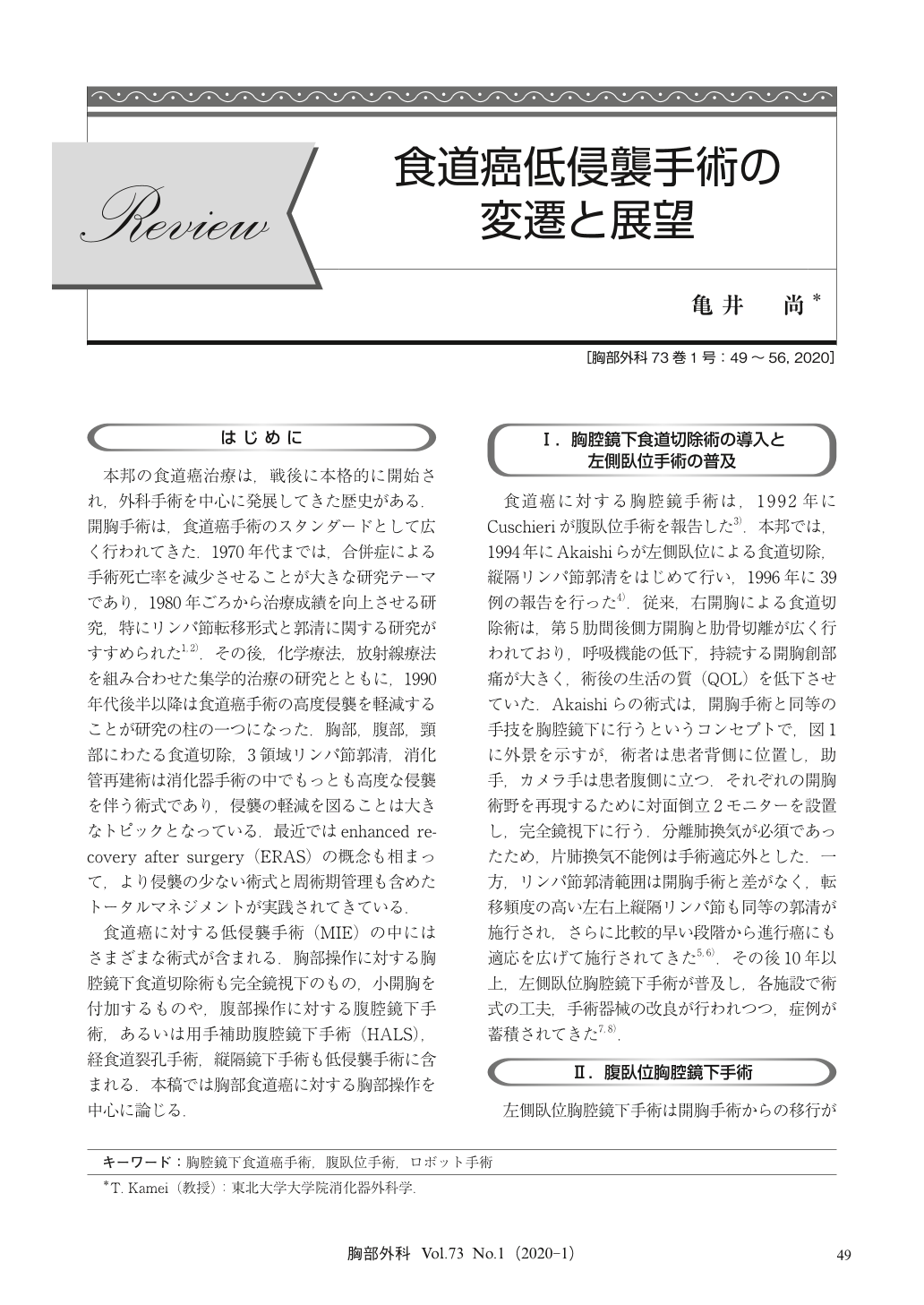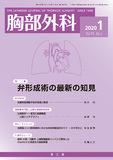Japanese
English
- 有料閲覧
- Abstract 文献概要
- 1ページ目 Look Inside
- 参考文献 Reference
- サイト内被引用 Cited by
本邦の食道癌治療は,戦後に本格的に開始され,外科手術を中心に発展してきた歴史がある.開胸手術は,食道癌手術のスタンダードとして広く行われてきた.1970年代までは,合併症による手術死亡率を減少させることが大きな研究テーマであり,1980年ごろから治療成績を向上させる研究,特にリンパ節転移形式と郭清に関する研究がすすめられた1,2).その後,化学療法,放射線療法を組み合わせた集学的治療の研究とともに,1990年代後半以降は食道癌手術の高度侵襲を軽減することが研究の柱の一つになった.胸部,腹部,頸部にわたる食道切除,3領域リンパ節郭清,消化管再建術は消化器手術の中でもっとも高度な侵襲を伴う術式であり,侵襲の軽減を図ることは大きなトピックとなっている.最近ではenhanced recovery after surgery(ERAS)の概念も相まって,より侵襲の少ない術式と周術期管理も含めたトータルマネジメントが実践されてきている.
Esophagectomy with mediastinal lymphadenectomy is a standard surgical procedure for esophageal cancer treatment, however, it is highly invasive operation and has possibility of reduction the patients’ quality of life (QOL). Thoracoscopic esophagectomy was introduced to reduce the surgical invasiveness since the 1990s and it has been widely performed now. Surgical procedure has been changed from left lateral decubitous position to prone position, and robot surgery or mediastinoscopic surgery has been applied currently. Many reports indicated good short term results compared to open surgery, especially reduction of the postoperative pulmonary complication. On the other hand, there is no scientific evidence of long term survival benefit, therefore, further researches are required including an ongoing phase Ⅲ randomized controlled trial (RCT) [Japan Clinical Oncology Group (JCOG) 1409].

© Nankodo Co., Ltd., 2020


